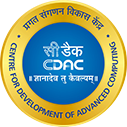World Patient Safety Day
World Patient Safety Day
Recognizing that Patient Safety is a global health priority, the World Health Assembly (WHA) adopted a resolution (WHA 72.6 ‘Global action on patient safety’ ) on Patient Safety which endorsed the establishment of World Patient Safety Day to be observed annually by Member States on 17 September.
The first World Patient Day was observed during 2019.
What is Patient Safety?
Patient Safety is a health care discipline that emerged with the evolving complexity in health care systems and the resulting rise of patient harm in health care facilities. It aims to prevent and reduce risks, errors and harm that occur to patients during provision of health care. A cornerstone of the discipline is continuous improvement based on learning from errors and adverse events.
Patient safety is fundamental to delivering quality essential health services. Indeed, there is a clear consensus that quality health services across the world should be effective, safe and people-centred. In addition, to realize the benefits of quality health care, health services must be timely, equitable, integrated and efficient.
To ensure successful implementation of patient safety strategies; clear policies, leadership capacity, data to drive safety improvements, skilled health care professionals and effective involvement of patients in their care, are all needed.
Burden of patient harm
Patient safety in health care is an urgent and serious global public health concern. Patient harm exerts a very high burden on all health care systems across the world. Every year, an inadmissible number of patients suffer injuries or die because of unsafe and poor quality health care. Most of these injuries are avoidable. The burden of unsafe care broadly highlights the magnitude and scale of the problem.
- Patient harm due to adverse events is likely to be among the 10 leading causes of death and disability worldwide.
- Most of these deaths and injuries are avoidable.
- It is commonly reported that around 1 in 10 hospitalized patients experience harm, with at least 50% being preventable.
- Around two-thirds of all adverse events resulting from unsafe care, and the years lost to disability and death, occur in LMICs.
It is estimated that the cost of harm associated with the loss of life or permanent disability, which results in lost capacity and productivity of the affected patients and families, amounts to trillions of US dollars every year. Furthermore, the psychological cost to the patient and their family (associated with the loss or disabling of a loved one), is certainly significant, though more difficult to measure.
Theme for 2023
"Engaging patients for patient safety" has been selected as the theme for World Patient Safety Day 2023.
Evidence shows that when patients are treated as partners in their care, significant gains are made in safety, patient satisfaction and health outcomes. By becoming active members of the health care team, patients can contribute to the safety of their care and that of the health care system as a whole.
The day aims to influence stakeholders including patients, families, policy makers, health care leaders, health workers and patient organizations to work collaboratively towards co-designing health care policies and safety interventions that truly reflect the needs and preferences of patients, ultimately enhancing healthcare safety globally.
Objectives of World Patient Safety Day 2023
- Raise global awareness of the need for active engagement of patients and their families and caregivers in all settings and at all levels of health care to improve patient safety.
- Engage policy-makers, health care leaders, health and care workers, patients’ organizations, civil society and other stakeholders in efforts to engage patients and families in the policies and practices for safe health care.
- Empower patients and families to be actively involved in their own health care and in the improvement of safety of health care.
- Advocate urgent action on patient and family engagement, aligned with the Global Patient Safety Action Plan 2021–2030, to be taken by all partners.
Key messages
- Safe health care is a fundamental right of all patients, everywhere, every time. And yet, patient harm due to unsafe care is one of the leading causes of death and disability worldwide, with millions of patients harmed every year.
- Patient and family engagement is a key strategy to developing safer health systems. Safe health care depends on the full involvement of patients and families as the users of the health care system, and it requires a shift from care designed for patients to care designed with patients.
- Patients and families should be involved at every level of health care, from fully informed consent and shared decision-making at the point of care, to policy-making and planning.
- No one should be harmed in health care. We must elevate the voice of patients, and we must listen and learn. Everybody has a role to play: policy-makers, health care leaders, health and care workers, patients and their families, patient advocates and civil society.
Related resources
Source : WHO
Last Modified : 9/19/2023
Provides information about International Day of Cl...
Provides information about National Nutrition Week...
Provides information about Patient safety.
Provides information about the Digital Portal for ...
